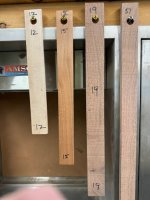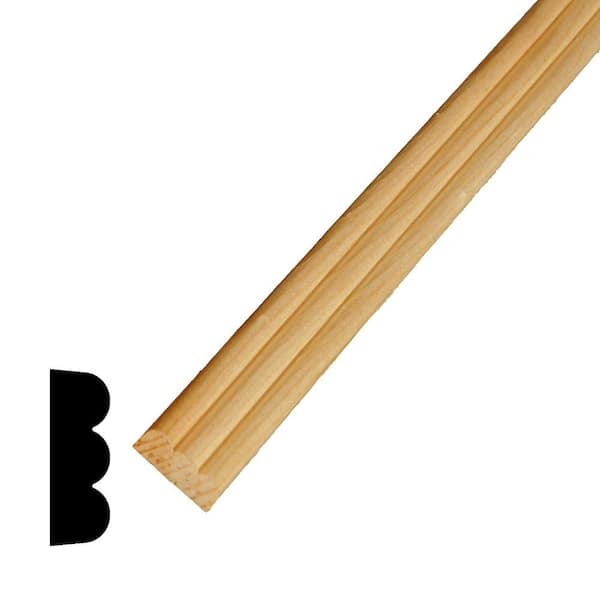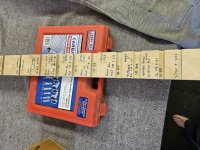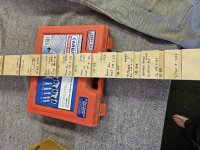rvieceli
Member
Made these up a little while ago and really wish I had done it sooner. They have helped. Immensely with my work flow.
[attachimg=1]
Made up some story sticks with lengths that I normally use. The 12 inch is for a smaller table lamp (both vertical and horizontal), 15 inch is the length of floor lamp feet, 19 inch is the length of a regular size table lamp. 51 inch is a floor lamp body.
Using these means I don’t have to worry about which tape I’m using. Having the visual piece means I can slide it around on the wood to determine where the best grain and figure is to be included.
Ron
[attachimg=1]
Made up some story sticks with lengths that I normally use. The 12 inch is for a smaller table lamp (both vertical and horizontal), 15 inch is the length of floor lamp feet, 19 inch is the length of a regular size table lamp. 51 inch is a floor lamp body.
Using these means I don’t have to worry about which tape I’m using. Having the visual piece means I can slide it around on the wood to determine where the best grain and figure is to be included.
Ron




